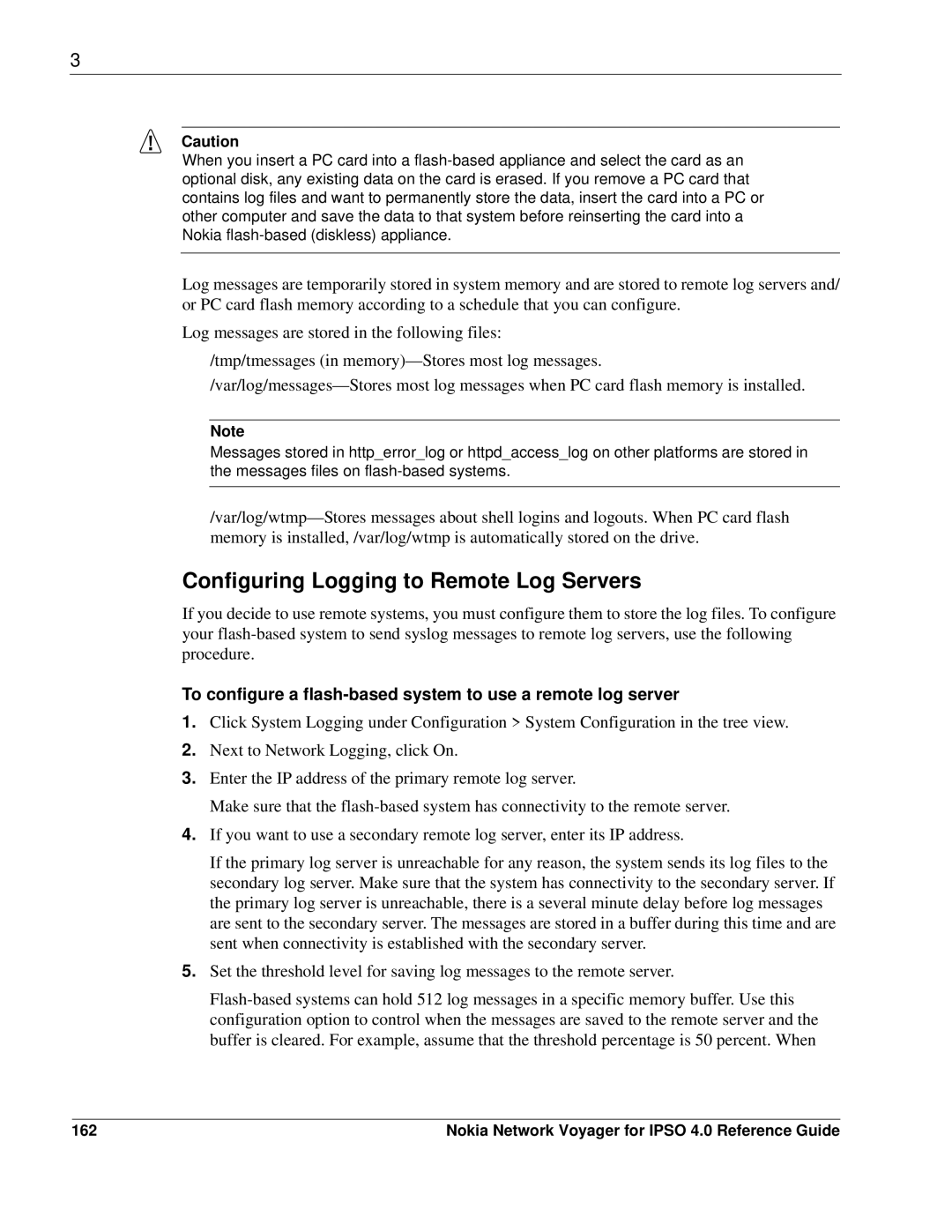
3
Caution
When you insert a PC card into a
Log messages are temporarily stored in system memory and are stored to remote log servers and/ or PC card flash memory according to a schedule that you can configure.
Log messages are stored in the following files:
/tmp/tmessages (in
Note
Messages stored in http_error_log or httpd_access_log on other platforms are stored in the messages files on
Configuring Logging to Remote Log Servers
If you decide to use remote systems, you must configure them to store the log files. To configure your
To configure a
1.Click System Logging under Configuration > System Configuration in the tree view.
2.Next to Network Logging, click On.
3.Enter the IP address of the primary remote log server.
Make sure that the
4.If you want to use a secondary remote log server, enter its IP address.
If the primary log server is unreachable for any reason, the system sends its log files to the secondary log server. Make sure that the system has connectivity to the secondary server. If the primary log server is unreachable, there is a several minute delay before log messages are sent to the secondary server. The messages are stored in a buffer during this time and are sent when connectivity is established with the secondary server.
5.Set the threshold level for saving log messages to the remote server.
162 | Nokia Network Voyager for IPSO 4.0 Reference Guide |
